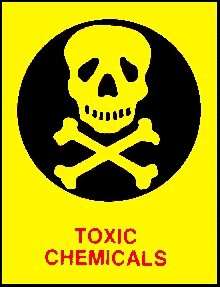
In 1936, Dr. Gerhard Schrader, a German Biochemist was working on a pesticide. After mixing some chemicals together, he noticed some unpleasant side effects. First, his eyesight began to deteriorate, and within a day he had difficulty breathing. Within a week, he was suffering from spasms and paralysis of his arm. Dr. Schrader had discovered the effects of organo-phosphates on humans.
These discoveries triggered a lot of German research, and by the Second World War, the Nazis had developed N-gas, a substance that could be absorbed through the skin, and proved fatal in 5 - 15 minutes, depending on the concentration. This chemical was the ancestor of the "Nerve Gases".

Development of "G" nerve gases continued throughout the 1940's, until in the early 1950's a slightly different breed was discovered. Soviet scientists had predicted the activity of this class of compounds, and several chemical companies and independent scientists had discovered their potency, but it was a British scientist, Dr. R. Ghosh, who developed the "V" agents.
These new chemicals worked in a similar way, with similar effects, but their low volatility leads to persistence in the atmosphere, which is the key to their desirability.
Although VX gas was developed in the British chemical warfare laboratory at Porton Down, the British traded their secret with the Americans for information on thermo-nuclear weapons in 1958. The Americans went into full-scale production of VX gas in 1961, but are now attempting to destroy stockpiles.
Only the U.S.A., France and Russia are known to possess VX. It hasn't yet been used to its fullest potential, because retaliation would probably be with nuclear weapons. VX nerve agent is such noxious material, that as Nicholas Cage says in the film "The Rock", "It is one of those things we wish we could disinvent".

Nicholas Cage in "The Rock", ©Hollywood Pictures / Simpson-Bruckheimer Prod.
Text with thanks to James Aldridge